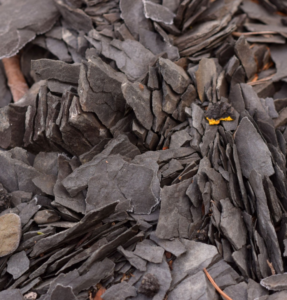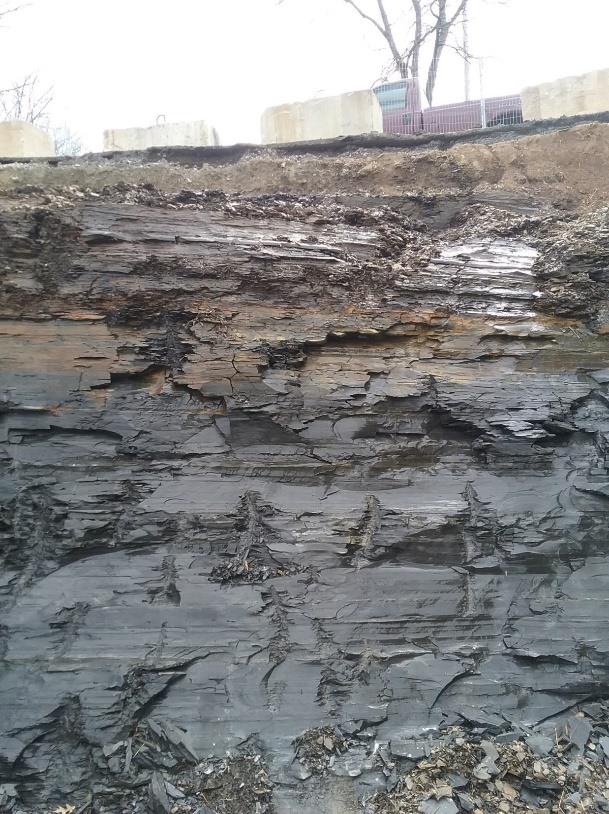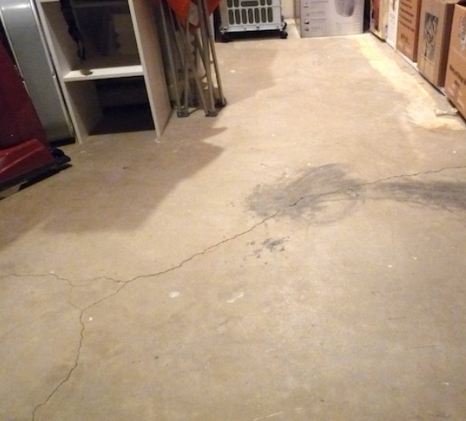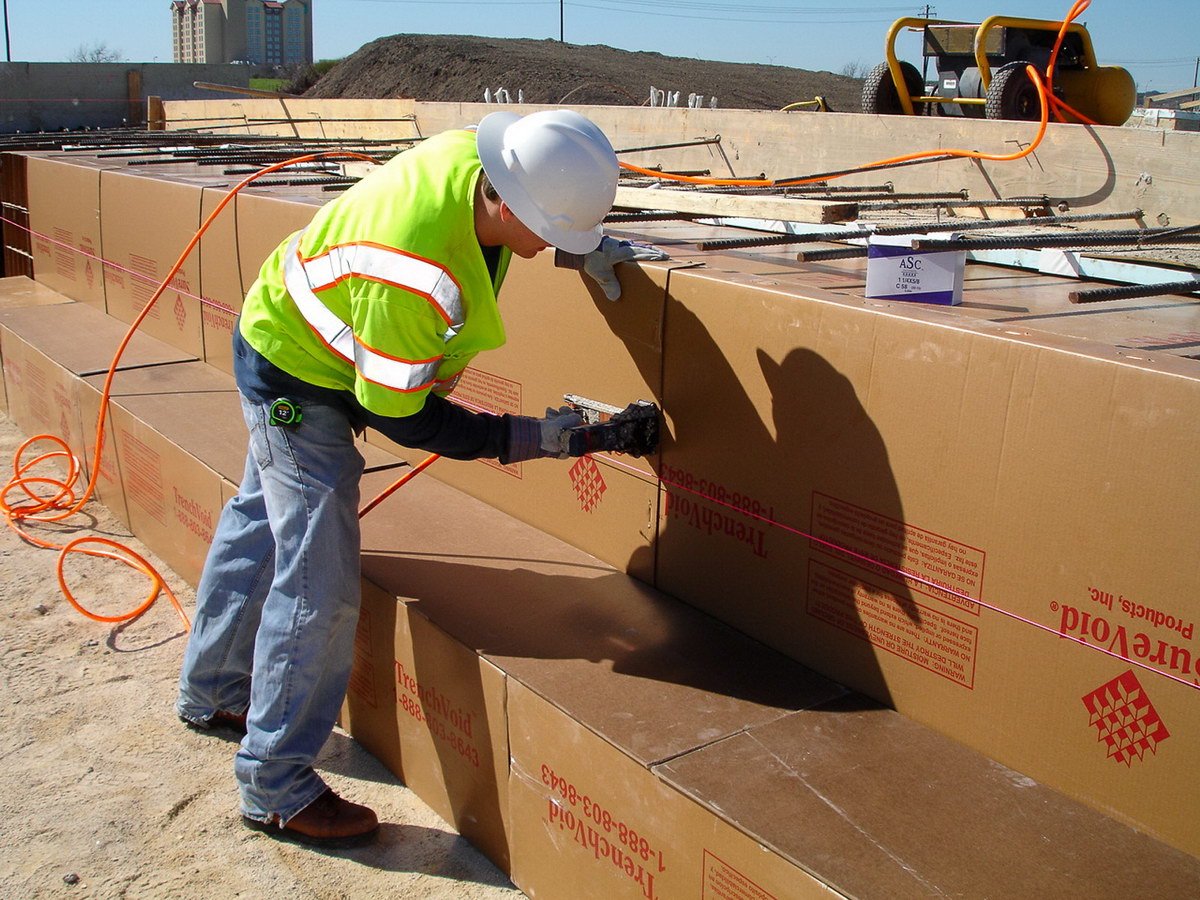Pyritic shale may have a shimmer of gold, but when disturbed, it can become one of the most damaging soil conditions faced in construction. Found across much of North America, this mineral-rich shale can expand, crack foundations, and corrode infrastructure long after a project is complete.


What Is Pyritic Shale?
Pyritic shale is a fine-grained sedimentary rock that contains concentrations of pyrite, a mineral more commonly known as “Fool’s Gold.” Shale is composed of microscopic clay minerals and typically splits easily, but it’s the presence of pyrite that alters its behavior.
In its undisturbed state, pyritic shale is stable. However, its stability changes dramatically once exposed to oxygen and moisture, as often occurs during excavation or construction site preparation.
Whether it’s exposed during erosion or excavation, water and air will force pyrite to undergo several complex biological and chemical reactions that alter its physical properties.
Oxidation is one of the most notable. The process generates acidic byproducts that can corrode surrounding materials and create expansive mineral formations like gypsum. As a result, the shale becomes corrosive and can expansively swell, threatening the integrity of any overlying or adjacent structures.
As discussed by Lee Bryant et al. (2003), “Although pyrite is the initial cause of many of these problems, gypsum may contribute significantly to problematic heave conditions in calcareous soil and rock environments.” Furthermore, an analysis from 1999 discovered that gypsum was present “in all documented cases of problematic soil in north Texas.” Other studies looking into pyritic heave-caused engineering failures have noted the presence of gypsum.
Why Does Pyritic Shale Matter in Construction?
As described by Lee Bryant et al. (2003), “It is quite remarkable that the same basic chemical and physical processes resulting from pyrite oxidation can cause such diverse and detrimental effects to so many types of geotechnical engineering projects.”
From a geotechnical perspective, pyritic shale is a high-risk soil condition. When excavation activities expose this material to air and water, the results can be disastrous. This includes expansive upwelling of the soil, expansion or deterioration of concrete, steel corrosion, and impact on the stability and strength of the surrounding rock.
In particular, the expansion places immense upward and lateral pressure on slabs, footings, and other concrete structures, which can occur years after structural completion.
When excavation activities expose this material to air and water, the results can be disastrous
These challenges make pyritic shale a critical consideration for builders and engineers working on foundations, slabs, and underground utilities. The following are a few notable cases of significant structural damage caused by pyritic shale on-site or when used as fill.
Johnson City Public Library, Tennessee
The Johnson City Public Library in Tennessee, built in 1979, experienced severe structural damage, including buckled floors and cracked walls, within just three years due to the underlying expansive shale deposits.
Geotechnical analysis revealed more rapid and severe heaving in areas constructed over fill due to increased surface area and permeability, which accelerated pyrite oxidation and gypsum formation. The damage was so extensive that the library was demolished in 2000.
West Virginia University Hospital and Basic Sciences Building, West Virginia
The West Virginia University Hospital and Basic Sciences Building began exhibiting signs of structural distress shortly after construction, including heaving concrete floors and cracked non-load-bearing walls.
A 1981 investigation revealed the presence of black carbonaceous shales rich in pyrite beneath the building—particularly under the ground floor near basement excavation edges. This pyrite oxidized upon exposure to air and moisture introduced during excavation, forming sulfates that caused the shale to swell.
Heaving was most severe where the shale seam, 0.9 to 2.6 feet thick, remained intact beneath the ground floor, while the basement, where the shale had been removed, showed no movement.

Residential Properties, Quebec & Ontario
In Eastern Canada, particularly on the south shore of Montreal, at least 10,000 homes were identified that had been affected by damage linked to pyrite oxidation in rockfill beneath concrete slabs.
First recognized in the 1970s, this issue has caused slab heaving and premature deterioration. While early cases were noted in Ottawa, Quebec City, and Matane, widespread awareness didn’t emerge until 1998, when media reports and citizen advocacy brought national attention to the problem. The damage primarily came from swelling due to pyritic aggregates used in foundation rockfill, which reacted with moisture and air and led to significant structural issues for residents across Quebec.
Solutions for Construction on Pyritic Shale
Post-construction remediation for foundation damage caused by expansive or corrosive soils is expensive and disruptive. Wherever geotechnical reports indicate long-term risks associated with swelling or heaving soils, pre-construction preventative measures are highly recommended.
According to Warren H. Anderson (2008), the primary way to prevent structural damage is to avoid excavating or building in areas with pyrite-rich shale. This is a simple answer, yet typically not a viable option. More practical recommendations include never using pyrite shale as construction fill and minimizing disturbance to the shale in the landscape (through excavation or trenching) to limit oxidation potential.
Anderson also advises builders to deploy moisture barrier methods or drainage systems around foundations. These are not always fully effective, but when combined with other solutions, Anderson suggests they can decrease risk.
Post-construction remediation for foundation damage caused by expansive or corrosive soils is expensive and disruptive.
Beyond avoiding problematic fill and guarding against moisture, are there any structural solutions for building on highly expansive soil? Void forms work under grade beams and around the piers to protect all at-grade or below-grade concrete. Also known as carton forms, they create a void space beneath and around concrete elements, as protection against expansive, corrosive, or seismic soils.
Based on geotechnical analysis, the specified void space acts as a buffer zone, giving swelling shale room to expand without placing pressure on the foundation or utilities above. Even years after installation, the voids persist beneath the structure to ensure that if the surrounding soil composition shifts and pyrite oxidation occurs, there is space for the swelling soil to expand into, protecting the structure above.

Lasting Structural Integrity on the Most Challenging Projects
Pyritic shale is a serious structural and safety concern, as the many documented and highly distracted cases across North America highlight.
Yet, even on sites with pyritic shale, with VoidForm, you can build with confidence. Our solutions have been trusted by engineers for more than four decades, specified on some of the most demanding soil conditions across the US and Canada.
Our suite of void systems helps shield projects from the hidden challenges hiding beneath the surface.
Easy to order, with end-to-end support, Protect Your Project with VoidForm

